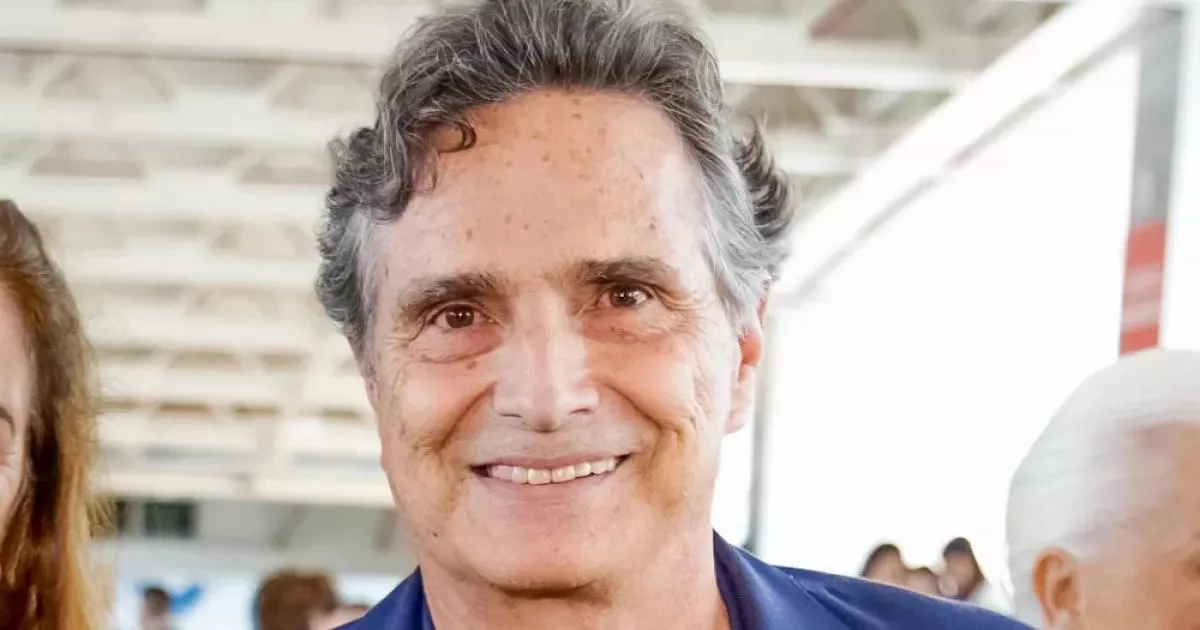August 1952: Birth of Nelson Piquet
Nelson Piquet Souto Maior was born in August 1952 in Rio de Janeiro, Brazil.
1960: Family's Move to Brasília
Nelson Piquet's family relocated to Brasília, the new capital of Brazil, in 1960.
1961: Father's Role in Government
Nelson Piquet's father, Estácio Gonçalves Souto Maior, became the Minister for Health in João Goulart's government in Brazil in 1961.
1971: Brazilian National Karting Champion
Nelson Piquet began his racing journey in karting, becoming the Brazilian national karting champion in 1971.
1972: Second Brazilian National Karting Championship
Nelson Piquet solidified his early racing success by winning the Brazilian national karting championship for the second time in 1972.
1974: Engineering Studies and Garage Work
Nelson Piquet discontinued his engineering studies in 1974 after two years and took up employment at a garage to support his racing aspirations, as his family was not providing financial assistance.
1976: Formula Vee Brazil Champion
Continuing his rise in motorsport, Nelson Piquet won the Formula Vee Brazil championship in 1976.
1977: Birth of Piquet's First Son
Nelson Piquet became a father for the first time in 1977, marking a significant personal milestone.
1978: Joining the Brabham Team
Nelson Piquet joined the Brabham Formula One team for the final race of the 1978 season.
1978: Record-Breaking Formula Three Season
Nelson Piquet made a significant mark in Formula Three in 1978 by securing a record number of wins, surpassing Jackie Stewart's all-time record.
1978: Arrival in European Motorsports
With guidance from Emerson Fittipaldi, Nelson Piquet transitioned to European motorsports in 1978, generating significant anticipation as a rising talent in the racing world.
1979: First Full Season in Formula One and Challenges with Brabham
Nelson Piquet embarked on his first full season in Formula One in 1979, driving for Brabham alongside Niki Lauda, but the season proved challenging for the team. Piquet faced several retirements due to accidents and car issues.
1979: Formula One Debut with Ensign and Driving for McLaren and Brabham
Nelson Piquet made his Formula One debut in 1979 with the Ensign team and also drove for McLaren and Brabham during that season.
1980: First Formula One Victory and Championship Battle
Nelson Piquet achieved his first Formula One victory at the United States Grand Prix West in Long Beach, California, in 1980. He went on to win two more races that season and finished second in the drivers' standings, engaging in a close battle with Alan Jones for the championship.
1980: Runner-Up in the Formula One Championship
Nelson Piquet finished as the runner-up in the Formula One World Championship in 1980.
1980: Piquet's Debut at the 1000km Nürburgring
Nelson Piquet participated in the 1000km Nürburgring endurance race in 1980, marking his foray into a different motorsport discipline.
1981: First Formula One World Championship
Nelson Piquet won his first Formula One World Drivers' Championship title in 1981.
1981: Victory and Tragedy at the 1000km Nürburgring
Nelson Piquet won the 1981 1000km Nürburgring alongside Hans-Joachim Stuck. However, the race was tragically cut short due to Herbert Müller's fatal accident.
1982: Piquet Becomes Formula One World Champion
Nelson Piquet wins the Formula One World Championship in 1982.
1982: Engine Reliability Issues in Formula One
Nelson Piquet's performance in the 1982 Formula One season was hampered by significant engine reliability problems.
1982: Reflecting on Past Non-Qualification
Piquet's non-qualification at the 1989 Belgian Grand Prix marked his first since the 1982 Detroit Grand Prix, highlighting the struggles he faced during the 1989 season.
1983: Second Formula One World Championship
Nelson Piquet secured his second Formula One World Drivers' Championship in 1983.
1984: Missed Championship Opportunities
Despite scoring some victories, Nelson Piquet faced challenges in 1984 that hindered his chances of winning the Formula One World Championship.
1985: Winter Testing and Tyre Issues
In preparation for the 1985 Formula One season, Nelson Piquet and the Brabham team conducted winter testing at Kyalami circuit in South Africa with their new tyre supplier, Pirelli. The tyre compounds developed during testing proved ineffective in the colder European races, hindering Piquet's performance despite having a fast car.
1985: Victory at the French Grand Prix and Pirelli's First Win
Nelson Piquet secured a victory at the French Grand Prix at Paul Ricard Circuit in 1985, marking Pirelli's first win since their return to Formula One. The race conditions, similar to those during testing, favored the Pirelli tyres, and the Brabham BT54's powerful BMW turbo engine helped achieve a then-record speed on the Mistral Straight.
1985: End of Time with Brabham
Nelson Piquet's time with the Brabham team came to an end in 1985.
1985: Signing with Williams and Mansell's Rise
Piquet signed with Williams at the 1985 Austrian Grand Prix, underestimating the threat posed by Nigel Mansell, who had yet to win a race. However, Mansell's subsequent victories boosted his confidence, setting the stage for a rivalry in the coming year.
1986: Move to Williams and Rivalry with Mansell
In 1986, Piquet joined Williams, becoming teammates with Nigel Mansell, setting the stage for a heated rivalry. Piquet reportedly received a US$3.3 million contract, largely funded by Honda. He initially underestimated Mansell, but their shared ambition and strong personalities created tension within the team.
1986: Joining Williams and Championship Contention
Nelson Piquet joined the Williams Formula One team in 1986 and was in contention for the World Championship until the final race.
1986: Unfulfilled Number One Status at Williams
Piquet believed he had a verbal agreement with Frank Williams to be the team's number one driver from 1986. However, Williams' accident and absence led to a different dynamic within the team, leaving Piquet feeling like the agreement was not honored.
1986: Piquet Believes He Should Have Won the 1986 Championship
Reflecting on his career, Nelson Piquet expressed his belief that he should have won the 1986 Formula One World Championship.
1987: Reflecting on Past Success
After the 1987 season, Piquet had achieved significant success, boasting 20 wins and three World Championships. However, his move to Lotus in the following year would present a new set of challenges.
1987: Piquet's Triumphant Finish to the 1987 F1 Season
Despite a challenging season in 1987, Nelson Piquet rallied to win the final two races in Japan and Australia. His victory in Australia marked the 500th World Championship Formula One Grand Prix, a testament to his resilience and skill. These wins propelled him to third place in the final championship standings.
1987: Piquet Secretly Battles Vision Problems After Imola Crash
Following his crash at the 1987 San Marino Grand Prix in Imola, Nelson Piquet secretly sought treatment for vision problems caused by the accident. He hid the extent of his injuries from his team, fearing that they would prevent him from racing.
1987: Third World Championship and Move to Lotus
In 1987, Piquet secured his third World Championship title, employing a strategic approach to accumulate points consistently. He announced his move to Lotus during the Hungarian Grand Prix, seeking a clear number one driver status.
1987: Third Formula One World Championship
Nelson Piquet clinched his third and final Formula One World Drivers' Championship title in a heated battle in 1987.
1987: Technical Skill and Championship Maneuvering at Williams
Piquet rebounded in 1987, strategically using his technical expertise and political maneuvering to gain an advantage at Williams. Despite a crash at Imola that caused a concussion, he engaged in a fierce battle with Mansell for the championship.
1988: Honda's Move to McLaren and Piquet's Departure
Honda, Piquet's main sponsor, decided to switch to McLaren for 1988, despite having another year on their contract with Williams. Their dissatisfaction with Williams' management's handling of the Piquet-Mansell dynamic, favoring Piquet as the number one driver, contributed to the decision.
1988: Piquet Makes Controversial Remarks About Fellow Drivers
In 1988, Nelson Piquet made headlines for his controversial remarks about fellow drivers Nigel Mansell and Ayrton Senna, as well as Ferrari founder Enzo Ferrari. These comments sparked outrage and ignited rivalries within the sport.
1988: Controversial Comments and Media Attention
In 1988, Piquet became known for his outspoken and controversial remarks in the media, targeting rivals like Mansell and Senna, even drawing the ire of Ferrari fans with comments about Enzo Ferrari's age. While he later claimed to be misquoted, his statements attracted significant attention.
1988: Move to Lotus and Decline in Form
Nelson Piquet's move to the Lotus Formula One team in 1988 marked a period of decline in his performance.
1988: Difficult Season with Lotus and Loss of Number One Status
Piquet's move to Lotus in 1988 marked a downturn in his career, despite driving a car with the same Honda engine as the dominant McLarens. The Lotus 100T chassis had significant problems, preventing Piquet from securing any wins and he lost his number one status to Ayrton Senna.
1988: Rio de Janeiro Circuit Renamed
Prior to the start of the 1988 season, the Rio de Janeiro circuit was renamed in honor of Nelson Piquet, a testament to his impact on motorsport.
1989: Struggles with Lotus and Non-Qualification
Piquet experienced a challenging 1989 season with Lotus, driving a car with a less powerful engine compared to his rivals. He secured a notable fourth place at the British Grand Prix but failed to qualify for the Belgian Grand Prix, his first non-qualification since 1982.
1989: Decision to Leave Lotus
Piquet made the decision to leave Lotus in 1989 upon learning about the team's plan to switch to Lamborghini V12 engines. He expressed concerns about the engine's lack of development and the potential impact on the team's competitiveness.
1990: Joining Benetton and Final Races
Nelson Piquet joined the Benetton Formula One team in 1990 and participated in his final races before retiring from the sport.
1990: Joining Benetton and Return to Form
Piquet signed with Benetton for the 1990 season, accepting an incentive-based contract. The team's acquisition of John Barnard and the exclusive use of the Ford-Cosworth HB4 V8 engine contributed to a resurgence in Piquet's performance.
1990: Looking for a New Team
With limited options available at top teams for the 1990 season, Piquet faced the prospect of being without a drive after announcing his departure from Lotus.
1991: Piquet's Final F1 Victory in Montreal
In 1991, Nelson Piquet achieved his final Formula One victory at the Canadian Grand Prix in Montreal. This memorable win came after his rival, Nigel Mansell, experienced a car failure in the last lap.
January 1992: Piquet Announces Retirement from Formula One
After a successful career in Formula One, Nelson Piquet announced his retirement in January 1992. Citing a desire to focus on his business ventures, Piquet's decision marked the end of an era in the sport.
1992: Piquet Founds Autotrac
Following his retirement from Formula One, Nelson Piquet founded Autotrac in 1992. This pioneering company specialized in providing mobile data messaging and GPS tracking for trucks, capitalizing on the growing need for fleet management solutions in Brazil.
1992: Piquet's Indy 500 Debut Cut Short by Injury
Nelson Piquet's attempt to compete in the 1992 Indianapolis 500 ended prematurely due to a severe crash during practice. The incident, which occurred when his car hit debris and spun into the wall, resulted in significant foot and ankle injuries.
1993: Piquet's Return and Retirement from IndyCar
In 1993, Nelson Piquet returned to the Indianapolis 500 after recovering from his previous year's injuries. However, his comeback was short-lived, as engine problems forced him to retire from the race after only 38 laps.
1996: Piquet's Le Mans Debut and Brazilian Endurance Racing Success
Nelson Piquet made his debut at the prestigious 24 Hours of Le Mans in 1996, finishing eighth. Later that year, he celebrated a victory in the Mil Milhas Brasileiras, a testament to his endurance racing prowess.
2000: Piquet Supports Son's Racing Career
From 2000, Nelson Piquet became a staunch supporter of his son, Nelson Piquet Jr.'s, burgeoning motorsport career. His guidance and support played a crucial role in his son's journey in racing.
2000: Piquet Establishes Piquet Sports Racing Team
In 2000, Nelson Piquet established Piquet Sports, a racing team dedicated to supporting his son Nelson Piquet Jr.'s burgeoning career in Formula Three Sudamericana. This endeavor underscored his commitment to nurturing young talent within motorsport.
2000: Piquet Inducted into International Motorsports Hall of Fame
In recognition of his remarkable achievements in motorsport, Nelson Piquet was inducted into the prestigious International Motorsports Hall of Fame in 2000.
January 2006: A Family Triumph at the Mil Milhas Brasileiras
Nelson Piquet, along with his son, Nelson Piquet Jr., won the 50th edition of the Mil Milhas Brasileiras in January 2006. This victory was particularly special as it marked a significant family achievement in motorsport.
July 2007: Piquet's Driving License Revoked
In July 2007, Nelson Piquet's driving license was revoked due to repeated speeding and parking violations. He was subsequently ordered by a Brazilian court to attend a driving safety course and pass an exam to regain his license.
2007: Nelson Piquet Jr. Becomes Renault F1 Test Driver
In 2007, Nelson Piquet Jr. secured a coveted position as a test driver for the Renault F1 team. This opportunity marked a significant step forward in his racing career and showcased his potential within the sport.
2008: Piquet's Fight for Justice in the Crashgate Scandal
During the 2008 Crashgate scandal, Nelson Piquet fiercely defended his son, Nelson Piquet Jr., who had been instructed to crash deliberately during the Singapore Grand Prix. Piquet's determination to uncover the truth and seek justice was unwavering.
2009: Piquet Ranked Among Greatest F1 Drivers by Autosport
Autosport, a prominent motorsport publication, ranked Nelson Piquet 13th in their 2009 list of the greatest Formula One drivers of all time.
2012: Piquet Reveals Lasting Effects of 1987 Imola Crash
In a 2012 interview, Nelson Piquet revealed the long-term impact of his serious accident at the 1987 San Marino Grand Prix in Imola. He disclosed that the crash had significantly impaired his depth perception, forcing him to race with a hidden disability for the remainder of his career.
November 2013: Piquet Undergoes Successful Heart Surgery
Nelson Piquet underwent successful heart surgery in November 2013. He made a full recovery.
2016: Piquet Makes Homophobic Remarks
In 2016, Piquet used homophobic language against Lewis Hamilton. This came to light in 2022, adding fuel to the controversy surrounding his earlier racist remarks.
2016: Demolition of Autódromo Internacional Nelson Piquet (Rio de Janeiro)
The Autódromo Internacional Nelson Piquet in Rio de Janeiro, named in honor of the three-time F1 champion, was demolished in 2016 to make way for infrastructure for the 2016 Summer Olympics.
2020: Piquet's Controversial Comments Resurface
Nelson Piquet's past controversial comments about Ayrton Senna resurfaced in 2020, drawing criticism and reigniting discussions about homophobia within motorsport and society at large.
2021: Piquet Makes Racist Remark
In 2021, Nelson Piquet used a racial slur when discussing Lewis Hamilton.
July 2022: Piquet Banned from F1 Paddock
In July 2022, following his controversial remarks, Piquet was banned from the F1 paddock. The British Racing Drivers' Club also suspended his membership.
2022: Piquet's Comments Resurface and Draw Condemnation
Piquet's 2021 comments resurfaced, leading to condemnation from F1 and the community. He apologized, but faced further backlash when footage of homophobic language he used towards Hamilton in 2016 emerged.
March 2023: Piquet Ordered to Pay Damages
A Brazilian court ordered Piquet to pay R$5,000,000 in moral damages in March 2023 for his racist and homophobic remarks.
Mentioned in this timeline
California is a U S state on the Pacific Coast...
Africa is the second-largest and second-most populous continent comprising of...
Japan is an East Asian island country situated in the...

Lewis Hamilton is a British Formula One racing driver currently...
Australia officially the Commonwealth of Australia encompasses the Australian mainland...
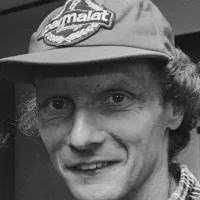
Niki Lauda was an Austrian Formula One driver and aviation...
Trending

8 months ago Maury Povich reflects on media; Connie Chung honored and encouraged to write memoir.
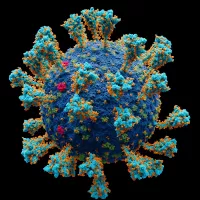
COVID- testing is essential for identifying SARS-CoV- infections and tracking the pandemic Two primary types exist molecular tests detect the...

24 days ago Joseph Quinn's 'Stranger Things' impact, 'Master of Puppets' fame, and 'Pillion' BIFA win.
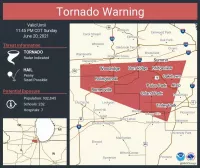
2 months ago Tornado Warning Issued for Terrebonne and Lafourche Parishes, Severe Weather Hits Houston
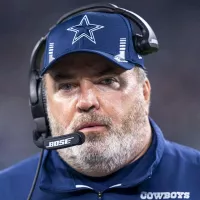
Mike McCarthy is an American football coach He was the head coach of the Dallas Cowboys - and the Green...

8 months ago Becky Lynch Ventures into 'Star Trek' and 'Happy Gilmore 2,' Feuds Emerge
Popular

Tucker Carlson is an American conservative political commentator known for...

XXXTentacion born Jahseh Dwayne Ricardo Onfroy was a controversial yet...

Ben Shapiro is a prominent American conservative political commentator media...

Candace Owens is an American conservative political commentator and author...

William Franklin Graham III commonly known as Franklin Graham is...

Ursula Gertrud von der Leyen is a prominent German politician...
